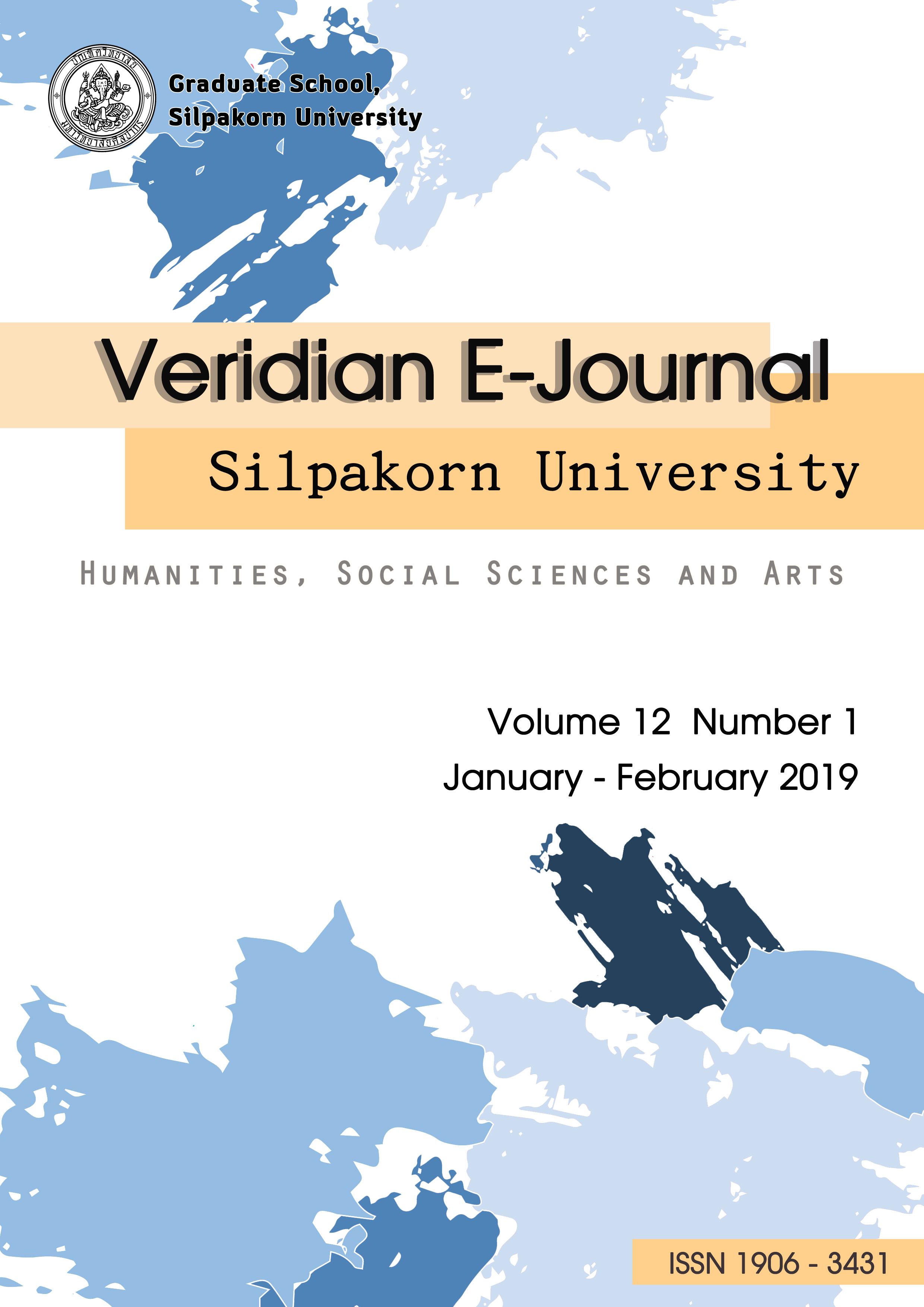บทความวิชาการอันเนื่องมาจาก 3 โซนาตาแห่ง 3 ศตวรรษ (Academic articles resulting from 3 sonata of 3 century)
Main Article Content
Abstract
นับตั้งแต่ศตวรรษที่ 16 เชลโลเครื่องดนตรีที่มีบทบาทเป็นเพียงตัวประกอบในวงดนตรี ยุคบาโรคตอนต้น จนกระทั่งนักแต่งเพลงชาวอิตาเลียนชื่อ โดมินิโก กาบริเอลลี (Dominico Gabrielli) ได้แต่งผลงานสำหรับเดี่ยวเชลโล ชุด Seven Recercare for violoncello E Basso continuo ขึ้น บทบาทของเชลโลจึงเปลี่ยนมามีบทบาทสำคัญขึ้นตั้งแต่นั้นงานวิจัยชิ้นนี้ได้เลือกโวนาตา 3 บท จาก 3 นักแต่งเพลงและอยู่ในยุคที่ต่างกัน 3 ยุค คือ
- L.Van Beethoven sonata for cello and piano in A Major op,69 ยุคคลาสสิค
- C. Debussy sonata for cello and piano in D minor (1915) ยุคกระอิมเพรสชั่นนิส
- D. Shostakovich sonata for cello and piano in D minor op.40 ยุคศตวรรษที่ 20
เพื่อศึกษาประวัติความเป็นมา และเรื่องราวที่อยู่เบื้องหลังของ 3 โซนาตา เพื่อศึกษาสังคีตลักษณ์และบทบาทระหว่างเชลโลกับเปียโน ของทั้ง 3 โซนาตา เพื่อการตีความ, การแก้ปัญหาทางเทคนิค และให้ข้อเสนอแนะที่เป็นรูปธรรมอันจะเป็นประโยขน์กับนักเชลโลรุ่นหลังต่อไป
From early 16th century violoncello was the instrument who recieved only supporting row in the barougue orchestra. Untill italian composer " Dominico Gabrielli" had composed "7 rececare for violoncello E Basso continuo" which changing the whole image of the cello and give a great opportunity for cello to be in a leading row.
This research has choosen 3 sonatas by 3 composer in 3 different periods in a row
Classical
- L.Van Beethoven sonata for cello and piano in A Major op.69 Impressionism
- C. Debussy sonata for cello and piano in D minor (1915) 20 th century
- D. Shostakovich sonata for cello and piano in D minor op.40
To compile resources and all the stories which inspired and influence the composers. And to search for something between the notes and also something behind the note. To study form and anlysation. To study charactor and row of the two instrument in suppose for interpretations. Solving technical problem which it needed and some profitable suggestion to the young generation cellist in a near future.

